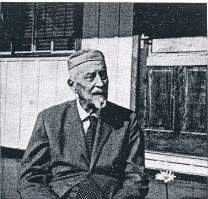Günter Tessmann was born in Lübeck, where he spent his childhood and youth. After finishing school he did an apprenticeship on tropical gardening at the colonial school in Witzenhausen.
Eventually Tessman went to Cameron and Spanish-Guinea (now: Equatorial Guinea), where he did botanical and zoological research. Moreover, Tessman developed a growing interest in Anthropology and began to collect ethnographic material and data.
Between 1907 and 1909 Tessman conducted some further field research in Cameron and Spanish-Guinea on behalf of his hometown Lübeck, to which he donated his complete ethnographic collection (now: Ethnological Collection of the City of Lübeck).
Tessmann furthermore published a two-volume monograph on the Pangwe people in 1913, including many aspects of their culture, history, religion and arts. Due to the success of his work, he started another field research the same year, this time in Eastern Cameron on behalf of the German Colonial Department.
Due to the difficult circumstances during World War I Tessmann had to interrupt his field work several times. After 1918 he more and more shifted his focus on South America. Between 1921 and 1926 he did a number of researches on the ethnic groups in Peru. After his return to Germany completed his doctorate in 1928.
In 1923 Tessman had published another monograph, this time on the Bubi people. This publications was followed by his work on the different people and languages of Cameron in 1932, his monograph on the Bafia in 1934 and his two-volume monograph on the Baja people in 1934/37. Tessmann´s intense long term stationary field work was at high standard for his time.
After the Nazi regime banned him from teaching at the university in Halle, Tessmann migrated to Brazil in 1936. There he worked as a botanist at the Museu Paranaense and the Instituto de Biologia in Curitiba. Tessmann retired in 1958.
Günter Tessmann died in Curibita in 1969.
(Text written by Vincenz Kokot in June 2012, based on an article by Wolfgang Haberland; ZfE (also photo source))
Short Portrait: Günther Tessmann

Günther Tessmann
 further information
further information
 Links
Links
